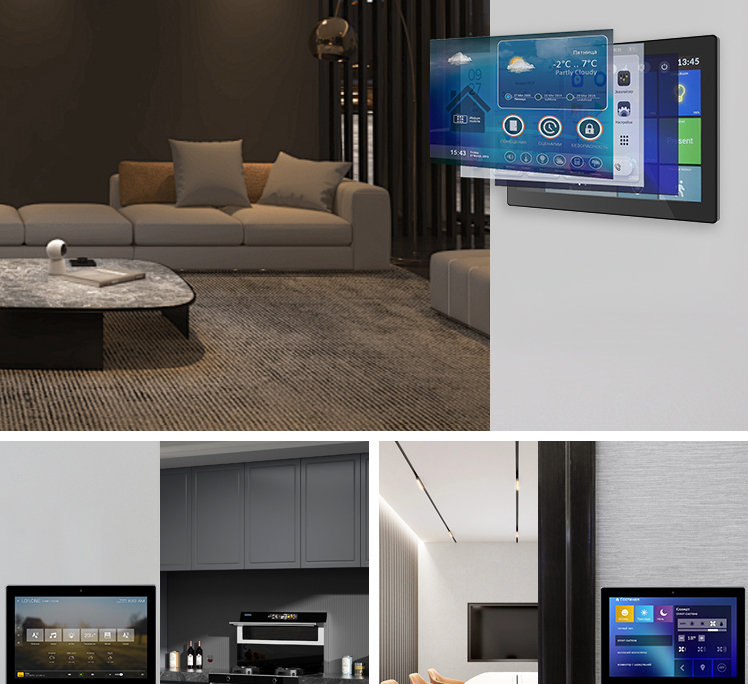Choosing the right touchscreen monitor is crucial
Touchscreen monitors have become an essential tool in many industries. They offer a simple way to interact with devices, making them more user-friendly. Whether used for personal, business, or educational purposes, touchscreen monitors bring convenience and efficiency. This blog will explore the key features, benefits, types, and applications of touchscreen monitors.
What is a Touchscreen Monitor?
A touchscreen monitor allows users to interact directly with what is displayed by using their fingers or a stylus. It removes the need for traditional input devices like a mouse or keyboard. Touchscreen monitors come in various sizes, with features that cater to different needs.
Benefits of a Touchscreen Monitor
1. Ease of Use: One of the main advantages is how easy touchscreen monitors are to use. The direct interaction allows for more intuitive control. This is especially helpful in retail, healthcare, and education settings, where quick responses are essential.
2. Space-Saving: Since touchscreen monitors combine the screen and input function in one, they help save space. No need for external peripherals like keyboards or mice, making them perfect for small spaces or mobile environments.
3. Improved Productivity: By allowing faster navigation and control, touchscreen monitors can improve efficiency. Tasks that involve frequent clicking or scrolling become easier and faster with a touch interface. This benefit is particularly useful in busy environments like restaurants, warehouses, and offices.
4. Enhanced Engagement: For businesses and educational institutions, touchscreen monitors can improve user engagement. Interactive screens can capture attention and create a more immersive experience for users, whether it’s for presentations or customer service kiosks.

The picture shows the application scenario of the touch screen
Types of Touchscreen Monitors
There are several types of touchscreen technology available, each with its unique advantages.
1. Resistive Touchscreens: These monitors rely on pressure to detect input. They are affordable and work well with styluses or gloves. However, their responsiveness might not be as smooth as other types.
2. Capacitive Touchscreens: Common in smartphones and tablets, capacitive touchscreens are highly responsive and support multi-touch gestures. They offer a clear and sharp display but require bare fingers or capacitive styluses for operation.
3. Infrared Touchscreens: These use infrared sensors to detect touch, making them extremely durable. They work well in harsh environments, as they do not rely on pressure or capacitive touch.
4. Surface Acoustic Wave (SAW) Touchscreens: These monitors use sound waves to detect input. They provide excellent clarity and accuracy, making them ideal for environments where image quality is important, like in design and creative work.
Key Features to Look For in a Touchscreen Monitor
When choosing a touchscreen monitor, certain features should be considered based on your specific needs:
1. Screen Size: Depending on the application, the size of the screen matters. Smaller screens are good for personal use, while larger ones are better for businesses, presentations, or educational settings.
2. Durability: Touchscreen monitors used in high-traffic or industrial areas should be durable. Scratch-resistant glass or protective covers help prolong the monitor’s lifespan.
3. Multi-Touch Capabilities: If your work requires multi-touch gestures (like zooming or rotating), ensure the monitor supports this feature. This is especially important for creative industries and advanced navigation tasks.
4. Resolution: A high-resolution screen ensures clarity and sharpness. For activities like photo editing, design, or gaming, a higher resolution is essential for a better visual experience.
5. Compatibility: Make sure the touchscreen monitor is compatible with your existing system. Some monitors may require specific drivers or operating systems to function correctly.
Applications of Touchscreen Monitors
1. Retail and Hospitality: Touchscreen monitors are commonly used in self-checkout kiosks, information centers, and order management systems. They help streamline customer service, allowing for faster transactions and improved satisfaction.
2.Education: In schools and universities, interactive touchscreen monitors enhance learning experiences. Teachers can deliver dynamic lessons, while students can interact directly with the content, making learning more engaging.
3. Healthcare: In hospitals and clinics, touchscreen monitors are used for patient check-ins, accessing medical records, and managing information systems. They help improve efficiency and reduce paperwork.
4. Offices: In a business environment, touchscreen monitors can boost productivity by simplifying tasks. They are used in meetings, presentations, and collaborative workspaces.
5. Gaming: For gamers, touchscreen monitors provide an immersive experience, especially for certain types of games where direct interaction enhances gameplay.
Pricing of Touchscreen Monitors
Touchscreen monitors come in a wide range of prices, depending on the size, technology, and features. Basic models for personal use might start around $150 to $300. High-end professional monitors can cost anywhere from $500 to over $1,000. When considering a purchase, think about your needs and how frequently the monitor will be used. It’s important to find a balance between price and functionality.
Conclusion
Touchscreen monitors are becoming more popular due to their versatility and convenience. Whether for personal use or business, they provide intuitive control and improved efficiency. By understanding the different types, features, and applications, you can choose the right touchscreen monitor that fits your needs.
Portworld is a manufacturer specializing in touchscreen monitors. We offer various sizes of touchscreens, and our products and technical services are designed to support industrial, smart home, and various other applications.


